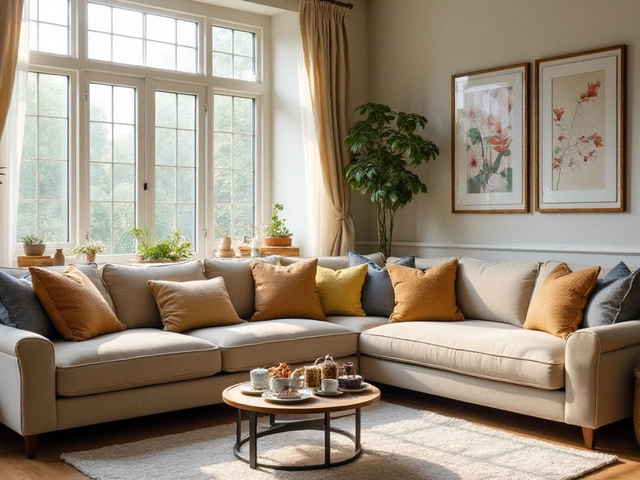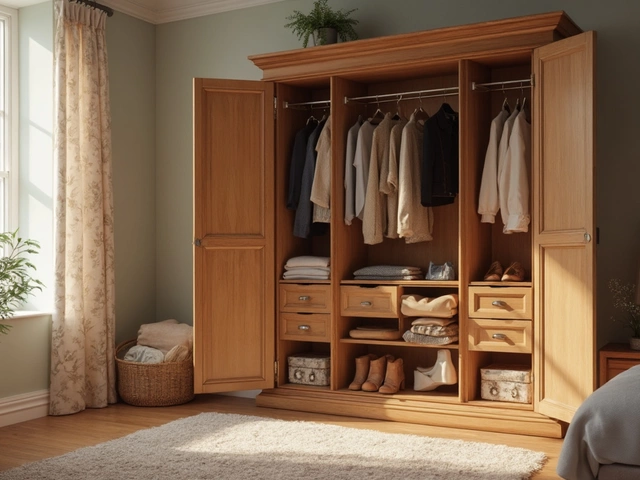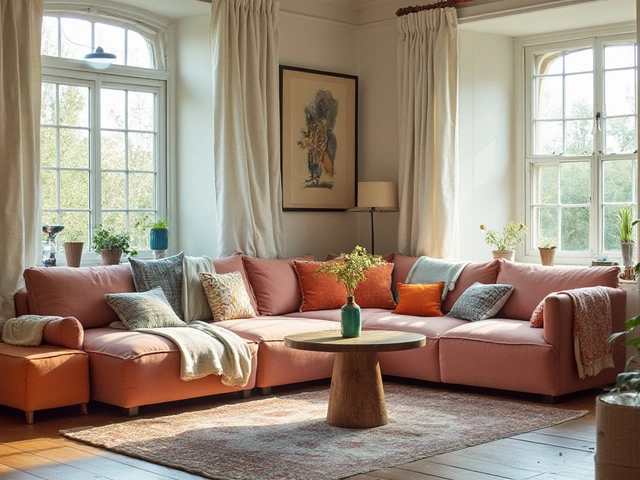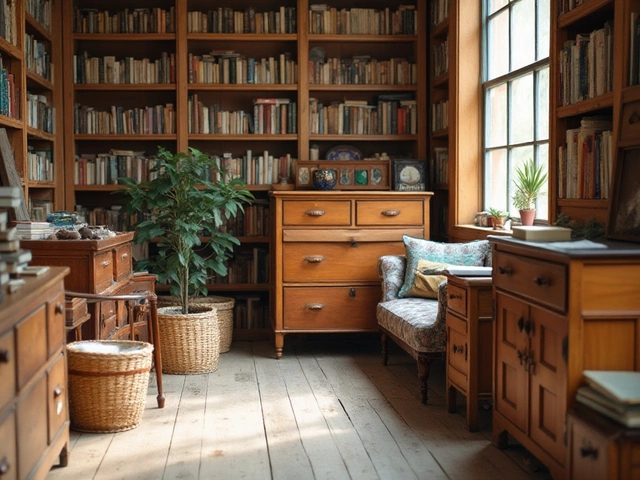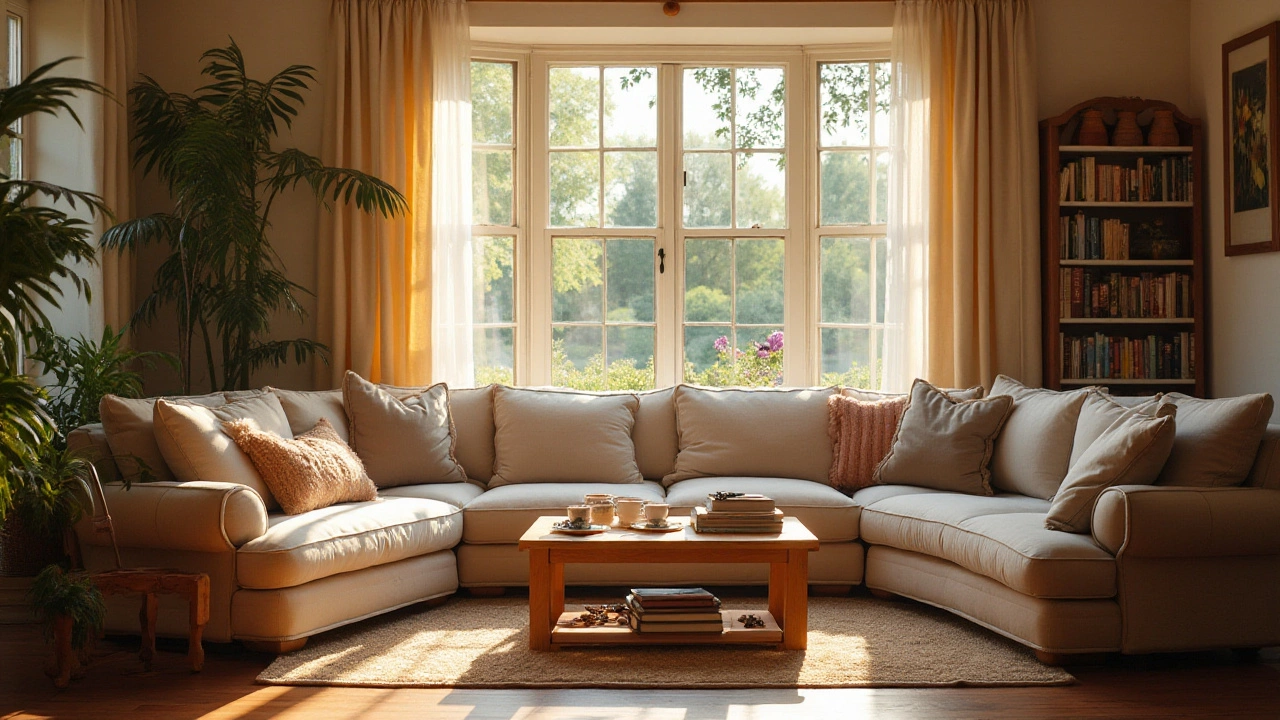 16
Dec,2024
16
Dec,2024
There's an art to designing a cozy and stylish living room, especially when it comes to deciding on the furniture layout. One question that often arises is whether it's wise to place a couch in front of a window. This inquiry isn't just about aesthetics; it dives into the heart of functionality and space optimization.
Corner sofas, in particular, raise interesting points of consideration. They offer unique configurations that can either enhance the flow and feel of a room or create visual obstacles. The decision to place them by a window hinges on understanding both the potential rewards and the challenges of such an arrangement.
In this exploration, we'll delve into how light management and privacy can be balanced when your lounge invites the outdoors in. Whether aiming to open up your space or capture breathtaking views, thoughtful planning can transform a simple room into a welcoming refuge. We'll arm you with tips and insights to ensure the placement of your corner sofa becomes a centerpiece, not an afterthought.
- The Bright Side: Benefits of Window Placement
- Light and Privacy: Striking the Right Balance
- Design Essentials: Arranging Your Space
- Practicality vs. Aesthetic Appeal
- Tips for Making It Work
The Bright Side: Benefits of Window Placement
Positioning a corner sofa in front of a window can truly transform the ambiance of a room, turning it into a delightful den of light and elegance. This configuration takes advantage of the natural light that streams in, amplifying the brightness of your living space and cutting down on the daytime energy used for artificial lighting. Natural light has been shown to improve mood, increase productivity, and even foster better sleep at night. With sunlight pouring over your sofa, your living room becomes not just a place to relax, but also a haven of positive energy.
From an aesthetic standpoint, a couch against a window offers the chance to grant visual access to the world outside. Imagine sinking into the plush cushions as you gaze upon a vibrant garden or an arresting cityscape. Such strategic placement can make the view an integral part of your home decor, almost as if nature becomes an art piece in your living room. This connection to the outside world is particularly cherished in urban settings where contact with nature can be scarce.
Moreover, windows offer a dynamic backdrop that changes with daylight and season, adding a touch of character and uniqueness to your home. Depending on the window's orientation, the play of light can create beautiful shadows and highlights that dance around your living room design. There's something poetic about enjoying the sunset glow from the comfort of your own sofa, enhancing the contemplative or convivial mood of gatherings.
One often overlooked benefit of placing a couch in front of a window is the sense of security and coziness it can create. Despite worries about drafty windows, modern homes are typically well-insulated, mitigating any discomfort while still allowing you to appreciate the scenery. In fact, according to a survey by Home Decor Weekly, 65% of homeowners feel more relaxed in spaces with ample natural light and unhindered views, reflecting a definite psychological benefit.
Embracing
interior expert Sheila Bridges once noted, "The placement of key furniture pieces can make or break the harmony in a room. A well-placed corner sofa facing a window can seamlessly blend form and function, inviting serenity and style." Her insights underline the multifunctional potential of thoughtful furniture arrangement.Striking this balance between indoor comfort and outdoor engagement is where the true art of window placement lies. Whether you're optimizing for light, views, or that intangible feeling of being connected to the wider world, a sofa by the window is often the right choice.
Light and Privacy: Striking the Right Balance
When it comes to placing a corner sofa in front of a window, managing light and privacy becomes a pivotal aspect of the design equation. Sunlight streaming into a room can be a mood booster, brightening the space and making it feel more expansive and inviting. Yet, too much light can fade fabrics and create unwanted glare on screens, leading to an uncomfortable living environment. To harness the benefits of natural light while mitigating its drawbacks, consider the usage of window treatments like blinds or sheer curtains. These elements can softly filter sunlight, allowing just the right amount to pour into your room without overwhelming the senses or damaging your interiors.
Privacy is another crucial factor when positioning a sofa in front of a window, particularly in bustling neighborhoods or cityscapes like Melbourne. Many people enjoy casual glimpses outside, but few appreciate feeling on display. Layered curtains offer a versatile solution: you can pull tighter drapes for full privacy or use sheers to obscure direct sightlines without sacrificing natural light. Additionally, consider the height and bulk of the corner sofas themselves, as a well-chosen design can act as a natural screen, protecting against prying eyes while still embracing the external view.
Some design experts suggest using plants strategically around the window to create a natural buffer. Large leafy greens not only enliven the space with their color and texture but can also serve as a privacy screen. According to renowned interior designer Sarah Richardson, "Plants bring a touch of the organic into your setting, creating a peaceful balance between the outdoor and indoor spaces."
If data and stats draw you in, consider this: studies show that living spaces with balanced lighting create harmony, leading to increased productivity and better relaxation in the home. It's a reminder of the subtle power of environmental factors on our daily lives. Whether opting for sleek, modern silhouettes or more traditional furnishings, the arrangement needs to work in harmony with your lighting strategies to ensure both privacy and light are optimized.
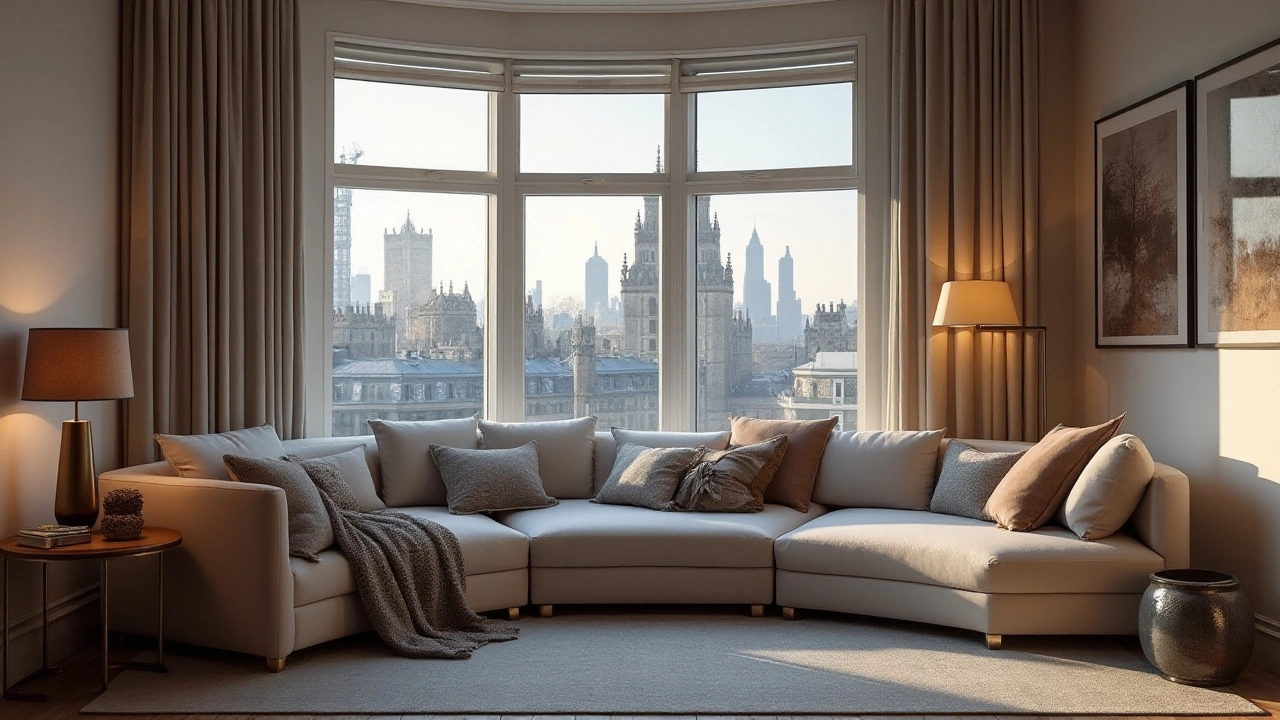
Design Essentials: Arranging Your Space
Arranging a living room is akin to orchestrating a symphony of style and functionality. Strategically positioning a corner sofa in front of a window can unlock both visual appeal and practical utility. Begin by assessing the layout of your living room, considering traffic flow and focal points. A well-placed corner sofa can act as a harmonious divider in open-space layouts, subtly sectioning off areas without closing them off entirely.
When it comes to living room design, every piece of furniture should serve a purpose, whether it's providing comfort, enhancing aesthetics, or improving flow. A corner sofa positioned by the window invites natural light into your space while maintaining a cozy place to relax and unwind. To make the most of your furniture's placement, consider how natural lighting throughout the day will interact with the sofa, paying special attention to any shadows or bright spots that might affect comfort or ambiance.
Optimizing Your View
No matter if your window frames a lush garden or an urban setting, ensuring your sofa doesn’t obstruct the view is crucial. Arrange the furniture so the sofa offers a comfortable gaze toward the outside, perhaps adding a coffee table for layers and depth. This technique not only improves the aesthetic of the room but also engages the view as part of the decor itself.Balancing Function and Beauty
For a balanced interior strategy, consider introducing a variety of textures and colors that complement the couch. This might mean incorporating throws and pillows that echo the shades found in the outdoor world, thus drawing a subtle connection between your home’s interior and exterior. With curtains or blinds, you maintain privacy and regulate the amount of light filtering in, creating a flexible living environment that adapts to your needs."Design should not overpower the living space, but instead, it should work harmoniously to create a sanctuary that feels both connected to and distinct from the world outside," notes renowned interior designer, Kelly Hoppen.
Practicality vs. Aesthetic Appeal
When it comes to arranging furniture in your living room, finding the balance between practicality and aesthetic appeal can often feel like a tightrope walk. Placing corner sofas in front of windows offers its own set of pros and cons, deeply intertwined with your home's style and functionality needs. On one hand, utilizing the space by the window for such a substantial piece can make efficient use of often-underutilized areas, especially in smaller rooms where maximizing space is crucial. Models that tuck into corners are particularly useful in creating an intimate seating arrangement, enhancing the coziness of your space rather than overwhelming it. On the flip side, the choice might block natural light or impede a clear view outside, which for some, could be an essential aspect of their home environment.
The appeal of placing a corner sofa by a window extends beyond mere functionality—it taps into the heart of home ambiance. Imagine basking in the natural warmth that floods through the window on sunny mornings, or curling up with a book during twilight when the living room transforms into a serene oasis. Such setups can enrich your lifestyle by integrating everyday activities with the surrounding environment in meaningful ways. Consider styles with low backs, which allow light and air to filter into the room without entirely blocking your window's views. A room can be transformed from a mere living area into a window to the world, offering a dynamic and evolving view throughout the day.
When contemplating such arrangements, it's helpful to ponder how a corner sofa fits not just in physical dimensions but in terms of room flow and activity. How does it influence pathways? Does it encourage gathering, or does it isolate? Each option deserves thorough reflection. In line with this, it's pertinent to highlight a quote from world-renowned interior designer Nate Berkus:
"Your home should tell the story of who you are and be a collection of what you love brought together under one roof."This sentiment urges consideration of both practical considerations and the overarching narrative of your living space's aesthetic.
While there are undeniable benefits to placing a sofa against a window, like increased seating and an intriguing use of space, it's not without its challenges. The possibility of sunlight fading fabric should not be underestimated. Selecting materials with UV resistance can help maintain your sofa's visual integrity, balancing style with the realities of daily use. Feathering in layered window treatments, like blinds or curtains, can provide versatility in light control, adding an adaptable element to your setup.
To best accommodate both practical needs and aesthetic desires, consider how your furniture arrangement impacts daily routines and the life you wish to cultivate. Map out the room's flow, the spots where the morning sun might warm your coffee nook, or where the afternoon light highlights your favorite art piece. Explore ways to enhance these natural charms with mindful placement of a corner sofa, creating a convergence of practicality and beauty tailored to your unique lifestyle.

Tips for Making It Work
Arranging a wonderous space with a corner sofa in front of a window is a delightful venture. It offers an array of styling opportunities while maintaining functionality. Remember, it’s about enhancing the room’s natural flow and creating a welcoming atmosphere. One of the first things to consider is the size and shape of your living room design. Is it spacious, or does it have odd nooks? Understanding your canvas will guide your choices effectively. A corner sofa can liberate floor areas, especially in smaller spaces, where every inch counts.
When placing your sofa, consider the view. Does the window overlook a garden, a bustling street, or maybe a serene skyline? Enhancing the natural beauty can add a dose of tranquility to the room. If the view itself is worth showcasing, align the corner sofa to allow for an unencumbered line of sight. This can make your living area a hub for relaxation. However, it's vital to keep in mind privacy needs, especially if the window faces directly onto a neighbor's property. Sheer curtains or blinds can provide a balance between exposure to the outside world and personal space.
Integrating soft furnishings like throws and cushions in complementary colors can bring cohesion to your setup. Textures and patterns can add a rich layer of depth without overwhelming the eye. When the elements of your decor work harmoniously, the focus naturally gravitates towards the features you wish to highlight, making the room feel complete. Choosing a color palette that aligns with the theme and furniture is quintessential. Mixing and matching will produce a vibrant atmosphere, while a monochrome or neutral palette can create a sophisticated look.
Lighting plays a crucial role in setting the mood for any space. A thoughtfully placed lamp or even a floor lamp near the corner sofa can provide additional lighting options for nighttime, making the setting functional around the clock. During the day, natural light streaming from the window can illuminate the room, saving energy and providing a warmer touch. The combination of artificial and natural light can be particularly effective in rooms where sunlight is either limited or abundant.
Beyond aesthetics, practicality is a factor that shouldn't be overlooked. If you have a bustling household, with humans or pets frequently traversing the room, consider the practicality of your setup. Does the current layout provide a clear path for movement, or does it create bottlenecks? A clever rearrangement might open up pathways, ensuring that traffic flows smoothly without disrupting the harmony of the space. It’s these minor adjustments that often lead to a more enjoyable living room experience.
